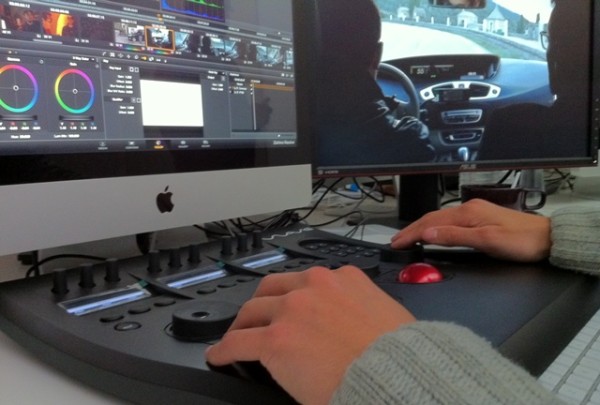

- #Davinci resolve lite 9 tutorial install
- #Davinci resolve lite 9 tutorial download
- #Davinci resolve lite 9 tutorial free
Search for the DaVinci Resolve and open it. From the top left of your screen, open the Activities tab.
#Davinci resolve lite 9 tutorial install
sudo dpkg -i davinci-resolve_16.1.1-3_b Install The DaVinci Resolve Package Next, you can install the DaVinci Resolve. The Make Resolve Deb Script Completed Successfully When the above command finishes successfully, you will get a message like the below one. Just relax this command takes some time to complete. makeresolvedeb_16.1.1-3.sh studio Run The Make Resolve Deb Script In case you have downloaded the studio version you can use the same script command and use the “studio” option instead of the “lite” one as following.
#Davinci resolve lite 9 tutorial free
Note that the “lite” option mentioned above is used for the free DaVinci Resolve. Now execute the script to build and generate the DaVinci Resolve deb package./makeresolvedeb_16.1.1-3.sh lite Extract the MakeResolveDeb script, and make sure that the script is located in the same directory with the DaVinci Resolve. Extract the DaVinci Resolve using the following command: unzip DaVinci_Resolve_16.1.1_Linux.zip Extract The DaVinci Resolve Package From your terminal, move to the Downloads directory then list its content to ensure that the previous two downloads are there. Save The Make Resolve Deb Script With The Same DaVinci Resolve Extracted Package

Save the script in the same directory as the DaVinci Resolve.

#Davinci resolve lite 9 tutorial download
Now let’s download the “MakeResolveDeb” script from this website. Meanwhile, check your download progress and when the download completes successfully move on to the next step.

For your download to begin, you need to register with your email and enter a few details about you. (In this tutorial, we have used the DaVinci Resolve free version.) Choose Your Download Type Choose between the DaVinci Resolve free version and the DaVinci Resolve studio one. Navigate to the DaVinci Resolve official website and download the DaVinci software. sudo apt install xorriso libssl1.0.0 ocl-icd-opencl-dev fakeroot Install The Additional Packages First, we need to install the required packages that are necessary to install the DaVinci Resolve software. In other words, convert the AVCHD files to ProRes422 before they even see FCPX.Step 1. Shoot, then batch convert AVCHD to ProRes422 using an app like Pavtube MTS Converter, THEN take the ProRes files into FCPX for editing. SO, if you want to shoot AVCHD, I suggest you modify your workflow to something like this: I had to take the original AVCHD files, convert them with MPEGstreamclip to true ProRes422, and then use them that way. Upon further investigation, it turned out that the "optimized" files were still in the AVC codec, but just rewrapped in a QT file. When I take a project from FCPX to Resolve, Resolve ALWAYS chokes on the AVCHD files, even though they were "optimized" in FCPX. I shoot a lot with an AF100, recording ProRes to an Atomos Samurai, but sometimes, I have to rely on the backup AVCHD files that were recorded on the SD card. I only know this because it's a problem I have with it every time. You might have a problem taking your optimized AVCHD files from FCPX to Resolve, and here's why. If it matters, I my camera creates AVCHD files and I then optimize those in FCPX upon import (also creating proxy files). The company whose tutorials I buy for FCPX has a Resolve tutorial, but it is for version 8.įor my purposes, since I use stationary cameras without lighting changes, it would be easier to make changes to the clips in my Event browser before I start putting them in a project. I mean, isn't it like editing a picture in that every time you make changes to it and save it you are reducing its quality? I read something about XML files, but I can't find a lot of information. I take it you can do the Resolve Lite adjustments to your clips from your camera before you edit them into a project in FCPX, or that you can finish your project in FCPX and then edit the color in Resolve Lite.īut, either way it seems you would be losing some quality. Having watched a basic tutorial about it, I now understand it operates independently. I downloaded Resolve Lite thinking it would operate within FCPX, like an effect. I know a fair amount about FCPX, but I'm no expert. I am brand new to Resolve Lite, and starting out with version 9.


 0 kommentar(er)
0 kommentar(er)
